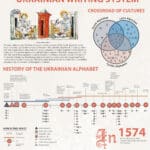Ukraine Before the Famine: A Land of Bread and Struggle
Ukraine has long been known as the “breadbasket of Europe.” Its fertile black soil, called chernozem, produced vast amounts of wheat, rye, and barley, sustaining not only its own people but much of the wider region. In the years following the Bolshevik Revolution of 1917 and the formation of the Soviet Union, Ukraine remained agriculturally rich but politically unstable.
During the 1920s, the Soviet regime permitted limited forms of private farming under the New Economic Policy (NEP), which helped Ukraine recover from the devastations of World War I and the Russian Civil War. Many Ukrainian farmers owned modest plots, worked independently, and sold surplus grain on local markets. This independence made Ukraine both prosperous and culturally vibrant — but it also made Stalin wary. He feared that Ukraine’s strong identity and relative self-sufficiency could threaten Moscow’s control.
Stalin’s First Five-Year Plan and Collectivization Drive
By 1928, Joseph Stalin launched his ambitious First Five-Year Plan, aiming to rapidly industrialize the Soviet Union. The state needed capital, and grain exports became a primary means to fund industrial growth. To secure this grain, Stalin ordered the collectivization of agriculture.
Collectivization meant dismantling private farms and forcing peasants to join kolkhozy (collective farms) or sovkhozy (state farms). Land, livestock, and equipment were seized by the state. Wealthier farmers, labeled kulaks (a term often applied broadly to anyone resisting), were demonized, deported, or executed. In Ukraine, where resistance was strong, the policy was met with widespread unrest.
By 1930, collectivization had triggered chaos: livestock slaughtered rather than surrendered, grain hidden from requisition squads, and entire communities defying Soviet agents. The regime responded harshly, sending the OGPU (secret police) to enforce compliance, deport families, and crush resistance.
The Road to Famine: Quotas, Repression, and Blacklists
As Ukraine resisted, Stalin tightened control. In 1932, grain procurement quotas were set at impossible levels, often exceeding total harvest yields. Brigades of officials swept through villages, confiscating not only grain but also potatoes, vegetables, and even seed stock meant for the next year’s planting.
A particularly brutal measure was the introduction of “blacklists” (chorni doshky). Villages placed on blacklists were accused of withholding grain and punished with total blockades. Trade, food deliveries, and even basic goods were cut off. Residents of blacklisted villages were trapped — unable to leave in search of food and unable to receive outside aid.
This combination of confiscations, blacklists, and border restrictions between Ukraine and neighboring Soviet republics created a sealed environment where famine was unavoidable. Unlike natural crop failures, this was engineered through deliberate policies, transforming hunger into a weapon.

